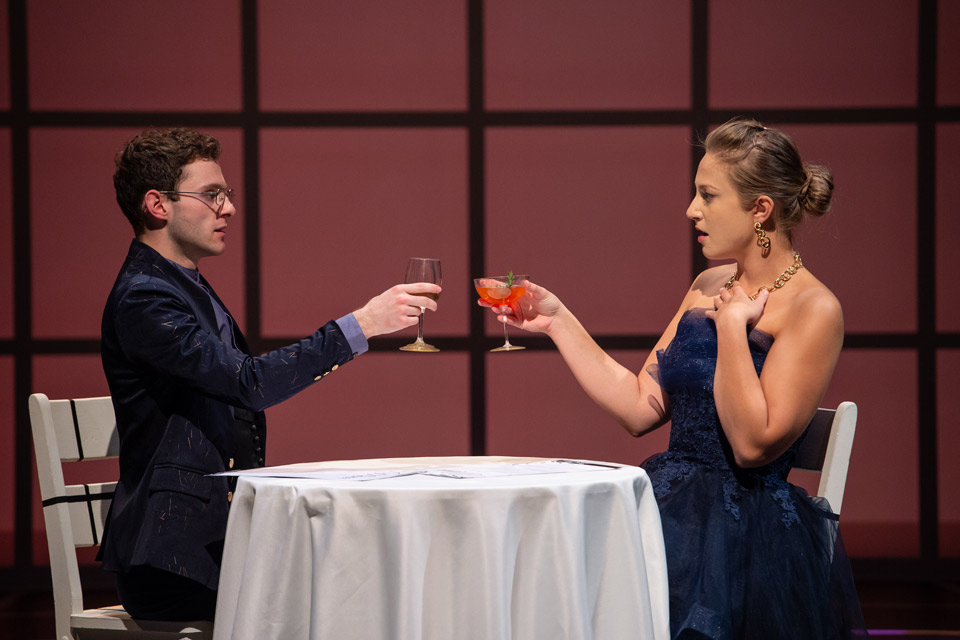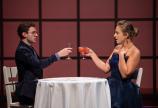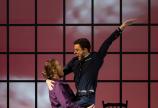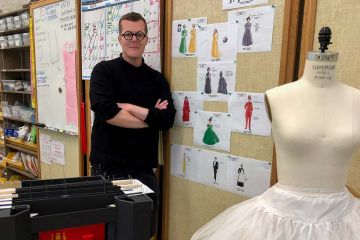Comic Potential at the Phoenix
- Adrienne Holierhoek

Romance with technology blends sci-fi and comedy
When recent news reports started flooding the internet about Amazon’s virtual assistant Alexa and her random bursts of hysterical laughter, it raised significant questions about artificial intelligence and its effects on our lives.
Is Alexa listening to us and laughing? Is it possible for a computer program to have a sense of humour? And if so, what might this say about our own humanity?
Written in 1998, Alan Ayckbourn’s Comic Potential, presented at UVic’s Phoenix Theatre Feb. 13–22, explores these questions with its own laughing robot and probes further to ponder: can we form meaningful relationships—or even fall in love—with robots?
Set in the not-too-distant future, this romantic sci-fi satire imagines a world where actors are replaced with lifelike robots, called “actoids.” When Adam, an aspiring young writer, discovers the charming android Jacie Triplethree (serial number JCF 31333) at a TV studio, he realizes that the programming glitch that makes her laugh hysterically also makes her more human.
“It’s a comedy with a sting in its tail,” says director and theatre professor Conrad Alexandrowicz. “In the age of today’s online assistants, it’s becoming more and more important to figure out how we proceed in a rapidly shifting technological landscape.”
A frequent director and professor of movement for actors, Alexandrowicz’s background in physical theatre lends itself well to Alan Ayckbourn’s script, which not only explores the rise of technology, but also offers a hilarious manifesto on the essence of great comedy: good timing, the idea that less is more, the element of surprise… and maybe a custard pie or two!
“To imagine a world where human actors have been replaced by robots is both a hilarious send-up of the way actors are perceived, and also an intriguing proposition: if all actors do is to reproduce behaviour, why not invent human-like equivalents to do so with programmable precision and predictability? It’s a proposition that is complicated by the fact that they work both better—and worse—than humans,” says Alexandrowicz.
As usual with Phoenix productions, Comic Potential integrates the talents of over 100 theatre students, both onstage and behind the scenes.
A team of undergraduate and graduate-level designers have developed a retro-futuristic aesthetic to complement Ayckbourn’s imaginary future, one that was envisioned from his perspective at the turn of the millennium.
These ideas are reflected in a holodeck set with a Star Trek-influenced forced-perspective grid, designed by student Leah Anthony and lit by MFA candidate Zhe Harry Lin. Retro-futurism also animates Misty Buxton’s costumes, which amalgamate past and present fashion trends with imaginings of what clothing will look like in our dawning technological age.
At a preshow lecture offered in connection with the play, Edwin Hodge, a UVic sociology adjunct professor known for his course on the Sociology of Star Trek, will expound on the importance that sci-fi and other speculative fiction play in exploring the human condition.
Comic Potential runs Feb. 13–22 at the Phoenix Theatre, with Hodge’s free preshow lecture offered on Friday, Feb. 14 at 7pm. Contact the Phoenix Box Office for tickets at (250) 721-8000 or visit phoenixtheatres.ca.
Photos


In this story
Keywords: theatre, art, creativity
Publication: The Ring




